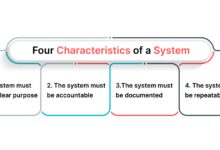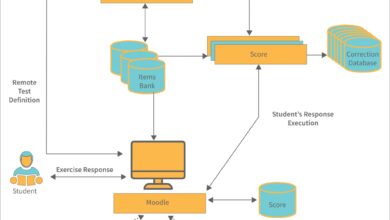System Notifications: 7 Powerful Secrets You Must Know
Ever wondered how your phone knows when to buzz or flash a message? It’s all thanks to system notifications—silent messengers that keep you in the loop. From software updates to security alerts, they’re the unsung heroes of digital communication.
What Are System Notifications?

System notifications are automated alerts generated by an operating system or software application to inform users about specific events, status changes, or required actions. These messages appear on-screen, often as pop-ups, banners, or icons in a status bar, and are designed to deliver timely and relevant information without interrupting workflow excessively.
Definition and Core Function
At their core, system notifications serve as a communication bridge between the software environment and the end user. They alert users to background processes such as updates, errors, connectivity issues, or incoming messages. Unlike application-specific alerts (like a new email in Gmail), system notifications originate from the OS level—think Windows, macOS, Android, or iOS.
- They are triggered by system-level events like low battery, network changes, or software crashes.
- They operate independently of user-initiated actions, meaning they can appear even when no app is actively in use.
- They are designed to be non-intrusive yet noticeable, balancing urgency with usability.
“System notifications are the nervous system of modern computing—constantly monitoring, reacting, and informing.” — TechInsider Journal, 2023
Types of System Notifications
Not all system notifications are created equal. They vary based on urgency, source, and user interaction. Common types include:
- Status Notifications: Inform about device state (e.g., Wi-Fi connected, battery at 20%).
- Alert Notifications: Require immediate attention (e.g., security warning, system crash).
- Update Notifications: Signal software updates, patches, or new features.
- Reminder Notifications: Prompt user action (e.g., “Back up your data now”).
These notifications can appear visually, audibly, or even haptically (via vibration), depending on device settings and user preferences.
How System Notifications Work Across Platforms
Different operating systems handle system notifications in unique ways, shaped by design philosophy, user experience goals, and technical architecture. Understanding these differences helps users and developers optimize notification delivery and response.
Windows Operating System
Microsoft Windows uses the Action Center (now integrated into the Notification Center in Windows 11) to manage system notifications. These alerts come from both the OS and trusted apps, covering everything from driver updates to antivirus scans.
- Notifications appear in the lower-right corner of the screen.
- Users can customize which apps can send notifications via Settings > System > Notifications.
- Windows also supports “quiet hours” to suppress non-urgent alerts during specified times.
For developers, Windows provides the Toast API to create rich, interactive system notifications with buttons and images.
macOS and Apple Ecosystem
Apple’s macOS uses the Notification Center, a centralized hub that aggregates alerts from the system and apps. System notifications in macOS are known for their clean design and integration with other Apple devices via iCloud and Continuity.
- Notifications appear as banners or alerts on the top-right of the screen.
- Focus modes (like Do Not Disturb or Work) allow granular control over which notifications get through.
- System notifications related to security (e.g., “This app needs access to your camera”) are prioritized and cannot be fully disabled.
Apple’s UserNotifications framework enables developers to schedule local and remote notifications with precise timing and content.
Android and Google’s Approach
Android offers one of the most flexible notification systems, thanks to its open architecture and deep integration with Google services. System notifications on Android range from battery optimization alerts to Google Play updates.
- Notifications appear in the status bar and expandable notification shade.
- Android 8.0 (Oreo) introduced notification channels, allowing users to fine-tune alerts by category (e.g., “Updates,” “Security,” “Battery”).
- Priority settings let users decide which notifications make sound, vibrate, or appear on the lock screen.
Google’s Notifications API supports rich media, actions, and even direct replies within the notification itself.
The Role of System Notifications in User Experience
System notifications play a crucial role in shaping how users perceive and interact with their devices. When well-designed, they enhance usability, improve safety, and reduce cognitive load. When poorly implemented, they can lead to frustration, distraction, and even system abandonment.
Enhancing Usability and Awareness
Effective system notifications keep users informed without overwhelming them. For example, a gentle alert about low disk space gives users time to act before performance degrades. Similarly, a notification about an unsecured Wi-Fi network can prevent data breaches.
- They reduce the need for manual system checks.
- They provide real-time feedback on background processes.
- They help users maintain device health and security.
“A well-timed system notification can prevent a system crash or data loss.” — UX Matters, 2022
The Dark Side: Notification Fatigue
Despite their benefits, excessive or irrelevant system notifications can lead to “notification fatigue”—a state where users become desensitized and start ignoring all alerts, even critical ones.
- Studies show that users who receive more than 50 notifications per day are 3x more likely to disable alerts entirely.
- Poorly timed notifications (e.g., in the middle of a presentation) damage trust in the system.
- Redundant alerts (e.g., multiple updates for the same app) increase user frustration.
To combat this, modern OS designs emphasize smart filtering, scheduling, and user control.
Security and Privacy Implications of System Notifications
While system notifications are essential for device management, they also pose security and privacy risks—especially when misused or exploited by malicious actors.
Phishing and Spoofing Risks
Cybercriminals have begun exploiting notification systems to mimic legitimate system alerts. Fake “virus detected” or “update required” messages can trick users into downloading malware or revealing credentials.
- These spoofed notifications often appear identical to real ones, especially on mobile devices.
- They may originate from malicious apps with notification permissions.
- Users are more likely to trust system-level alerts, making them prime targets for social engineering.
Experts recommend verifying the source of any urgent system notification and avoiding clicking on embedded links in alerts.
Data Exposure Through Notifications
Another concern is the amount of sensitive information displayed in notifications. A system alert showing “New email from boss: Meeting canceled due to HR issues” might be visible on a locked screen, exposing private data to bystanders.
- Android and iOS allow users to hide sensitive content on lock screens.
- Enterprise policies often restrict notification content in corporate environments.
- Developers are encouraged to use generic messages for sensitive alerts (e.g., “You have a new message” instead of showing the full text).
The Privacy Tools initiative recommends disabling notification previews for messaging apps on shared devices.
Customizing and Managing System Notifications
One of the most empowering aspects of modern computing is the ability to customize system notifications. Users can tailor alerts to their lifestyle, work habits, and privacy needs.
Adjusting Notification Settings by Platform
Each operating system provides robust tools for managing system notifications:
- Windows: Go to Settings > System > Notifications to toggle alerts, set priority, and schedule focus times.
- macOS: Use System Settings > Notifications to configure delivery, sounds, and lock screen visibility.
- Android: Open Settings > Apps > Notifications to manage channels, priority, and behavior.
- iOS: Navigate to Settings > Notifications to customize banners, sounds, and notification grouping.
These settings allow users to suppress non-critical alerts during work hours or bedtime, improving focus and sleep quality.
Third-Party Tools for Advanced Control
For users who need even more control, third-party apps offer advanced notification management:
- Notification Log (Android): Keeps a history of all notifications, useful for auditing or recovering missed alerts.
- Notification Center Enhancer (macOS): Adds filtering and search capabilities to the default center.
- Focused Inbox (Windows): Integrates with Outlook to prioritize system and email alerts.
These tools are especially valuable for professionals managing high-volume alert environments.
Future Trends in System Notifications
As technology evolves, so do system notifications. Emerging trends point toward smarter, more context-aware, and user-centric alert systems.
AI-Powered Notification Filtering
Artificial intelligence is being used to predict which notifications are most relevant to a user at any given moment. Google’s Now on Tap and Apple’s Proactive Suggestions are early examples of AI-driven context awareness.
- AI analyzes user behavior, location, and app usage to prioritize alerts.
- It can delay non-urgent notifications until a more appropriate time.
- Machine learning models reduce false positives and improve relevance over time.
According to a Gartner report (2023), AI-enhanced notifications will reduce user distraction by 40% by 2026.
Integration with Wearables and IoT
System notifications are no longer confined to phones and computers. Smartwatches, fitness trackers, and IoT devices now relay alerts in new ways.
- A smartwatch can vibrate to signal a critical system alert.
- Smart home hubs can announce notifications via voice assistants like Alexa or Google Assistant.
- Car infotainment systems display driving-relevant alerts (e.g., low fuel, software update available).
This cross-device ecosystem requires seamless synchronization and unified notification management.
Best Practices for Developers and Users
Whether you’re building software or using a device, understanding best practices for system notifications ensures a better experience for everyone.
For Developers: Designing Effective Alerts
Creating useful system notifications requires careful planning and user empathy.
- Be concise: Use clear, action-oriented language.
- Respect user control: Allow opt-out options and support notification channels.
- Avoid spam: Don’t send repeated alerts for the same event.
- Use appropriate urgency: Reserve high-priority alerts for critical issues.
The Material Design guidelines offer excellent examples of effective notification design.
For Users: Staying in Control
Users should actively manage their notification environment to maintain productivity and peace of mind.
- Regularly review which apps can send system notifications.
- Use focus modes during work or sleep hours.
- Disable previews of sensitive content on lock screens.
- Update software to ensure notification systems are secure and up-to-date.
A 2023 study by the Pew Research Center found that users who customize their notifications report 27% higher satisfaction with their devices.
What are system notifications?
System notifications are automated alerts generated by an operating system to inform users about events like updates, errors, or device status changes. They appear on-screen and help users stay informed without constant manual checks.
How do I disable system notifications?
You can disable system notifications through your device’s settings. On Windows, go to Settings > System > Notifications. On macOS, use System Settings > Notifications. Android and iOS offer similar menus under their respective settings apps.
Can system notifications be hacked?
Yes, malicious apps or phishing attacks can spoof system notifications. Always verify the source of urgent alerts and avoid clicking on links within notifications. Keep your system updated to protect against known exploits.
Why are my system notifications not working?
This could be due to disabled settings, app permissions, or software bugs. Check your notification settings, ensure the app has permission to notify, and restart your device if needed.
How can I make system notifications more useful?
Customize notification settings by app and type, use focus modes, and enable AI-based filtering if available. Prioritize critical alerts and suppress non-essential ones to reduce clutter.
System notifications are far more than simple pop-ups—they are a vital part of our digital ecosystem. From keeping devices secure to enhancing user experience, they play a silent but powerful role in modern computing. By understanding how they work, managing them wisely, and staying aware of emerging trends, both users and developers can harness their full potential. Whether you’re troubleshooting an alert issue or designing the next generation of notification systems, the key lies in balance: delivering the right message, at the right time, in the right way.
Further Reading:









